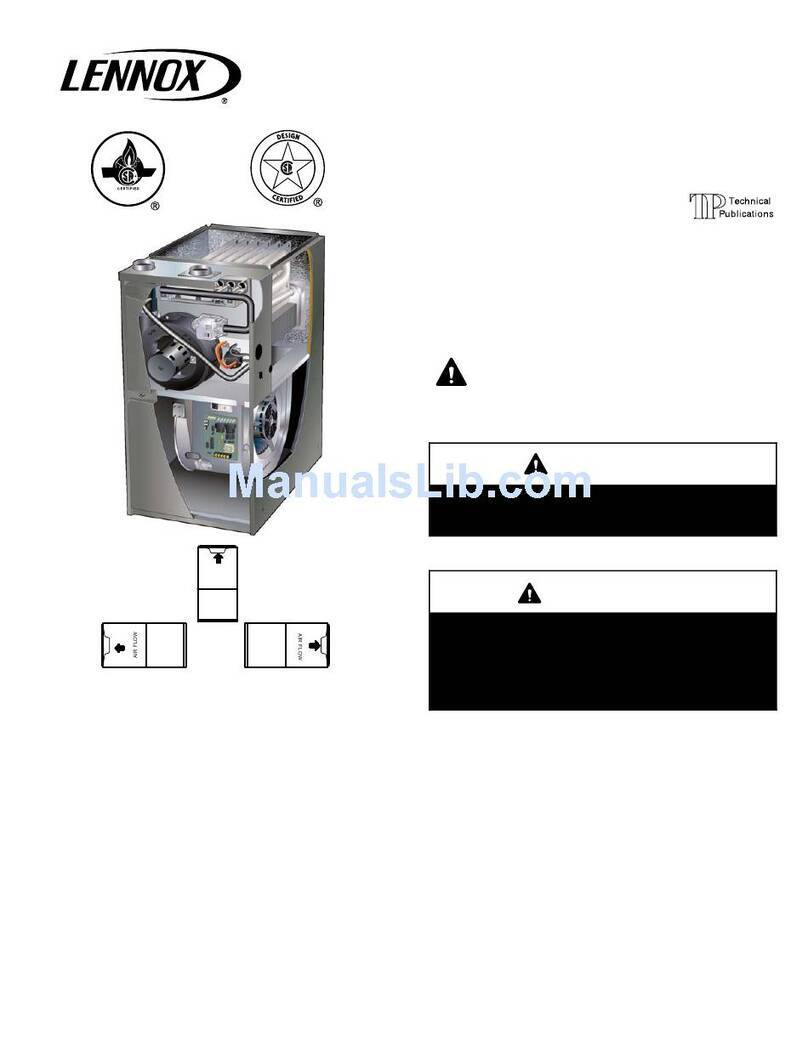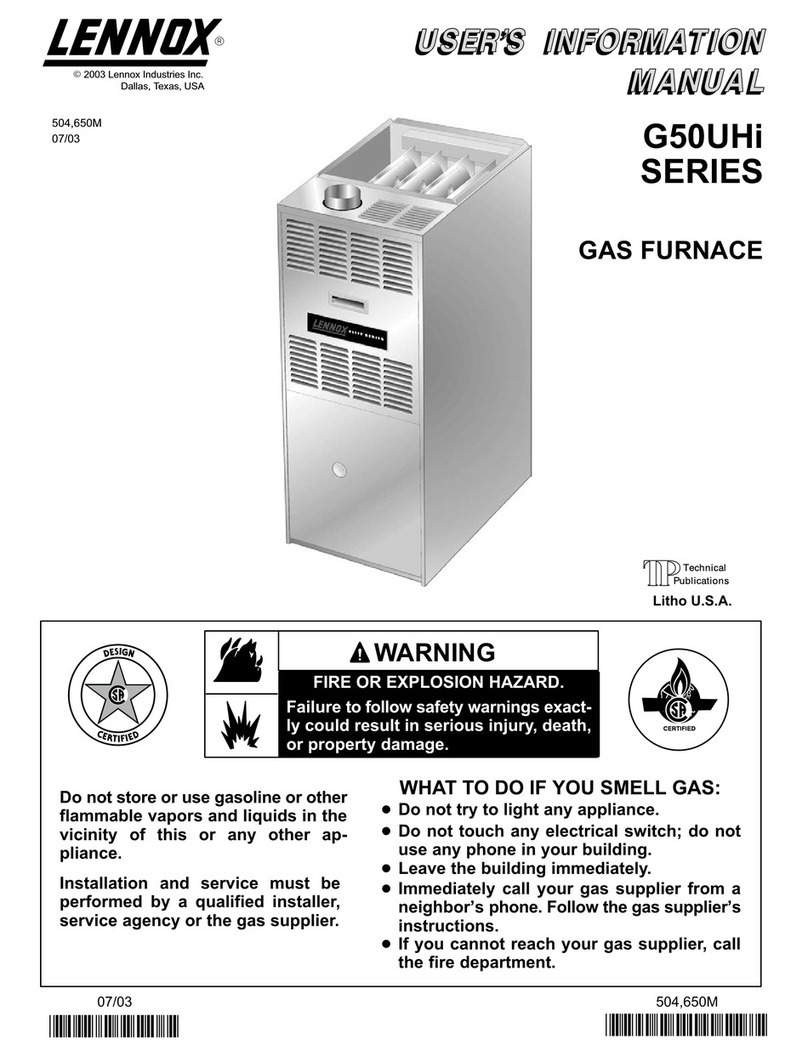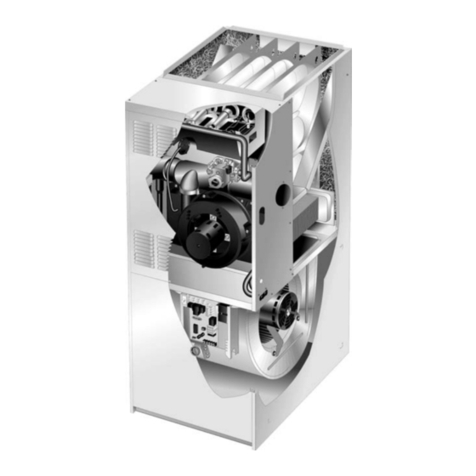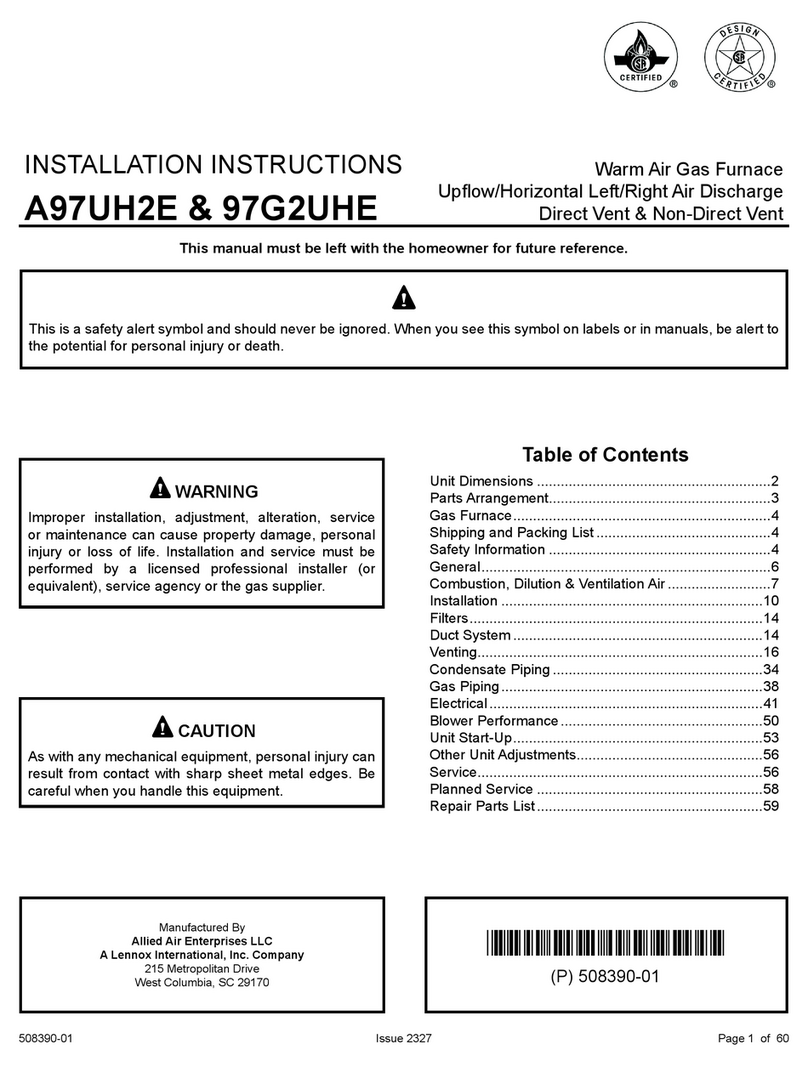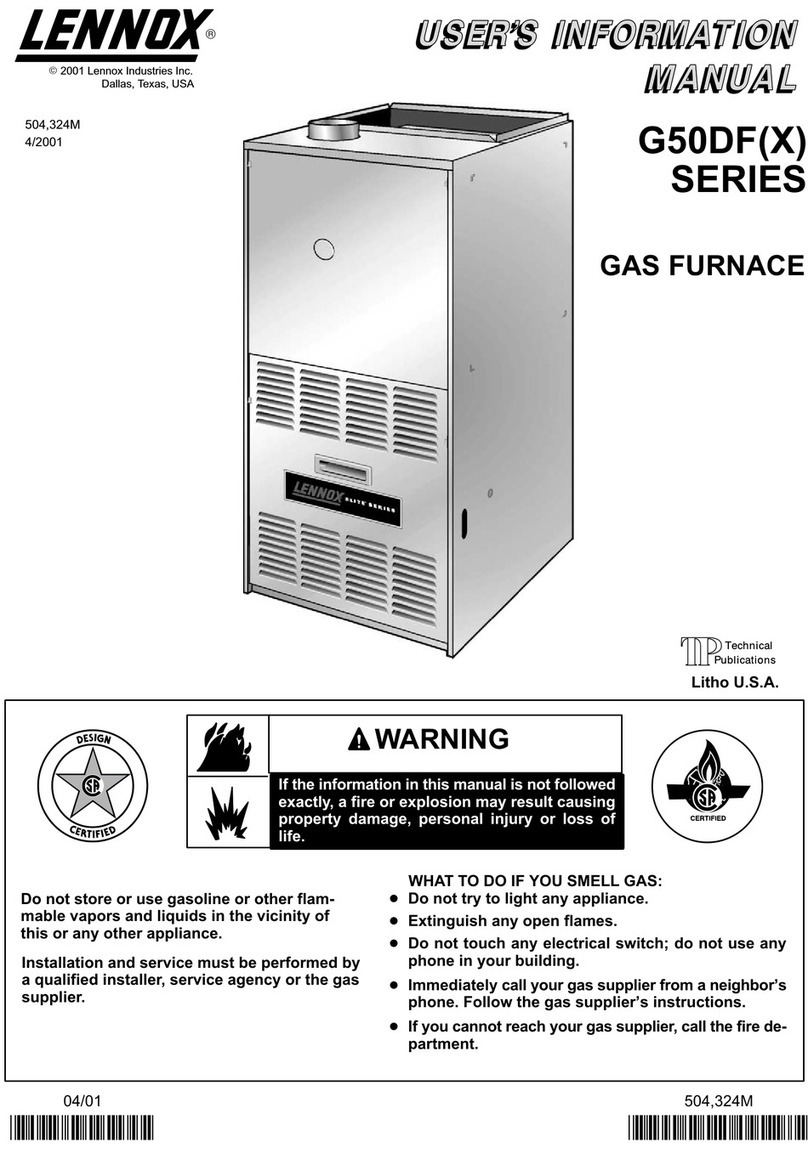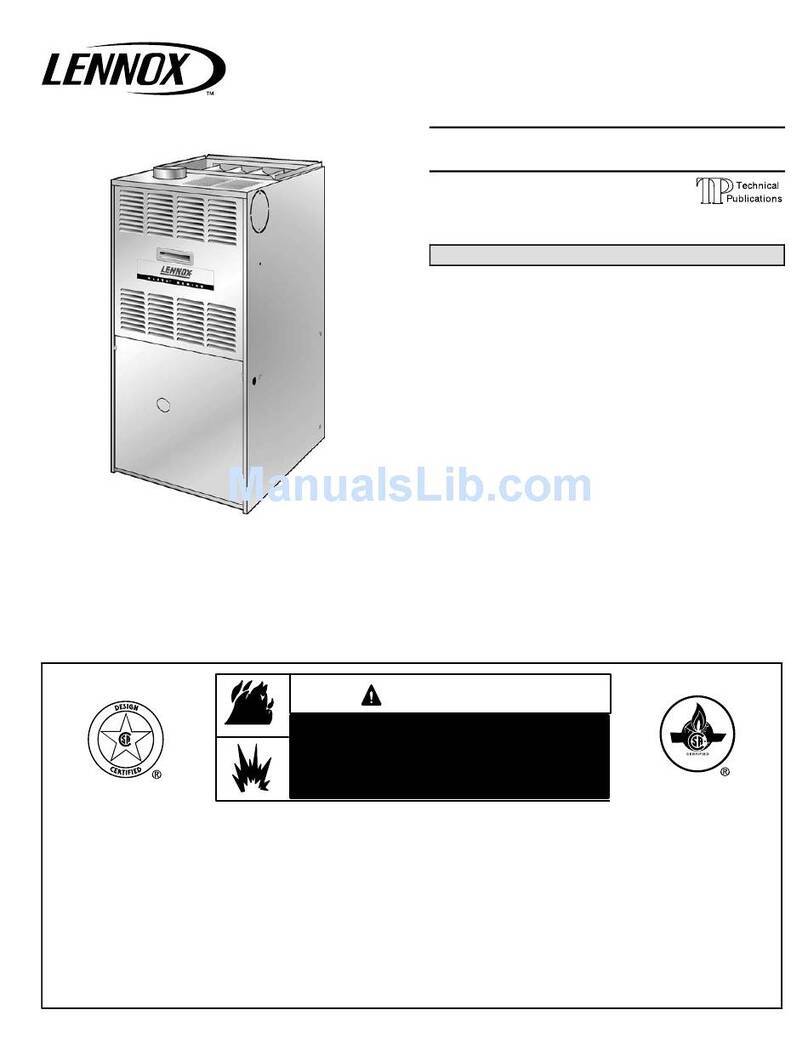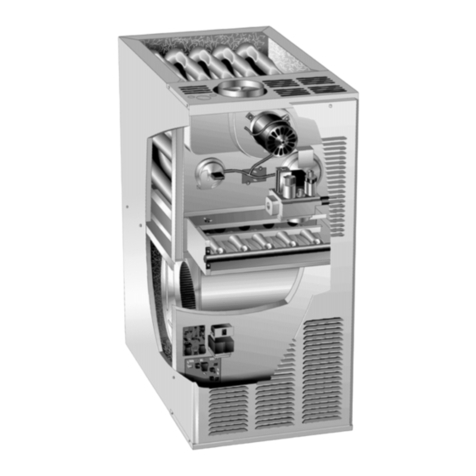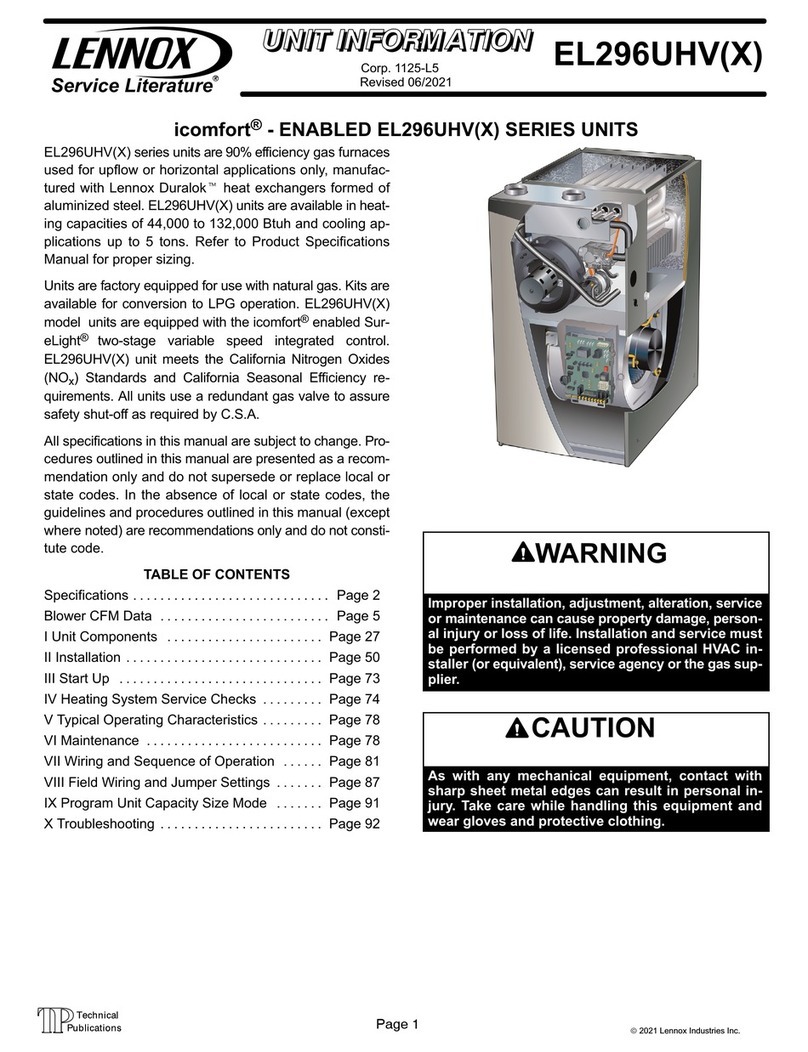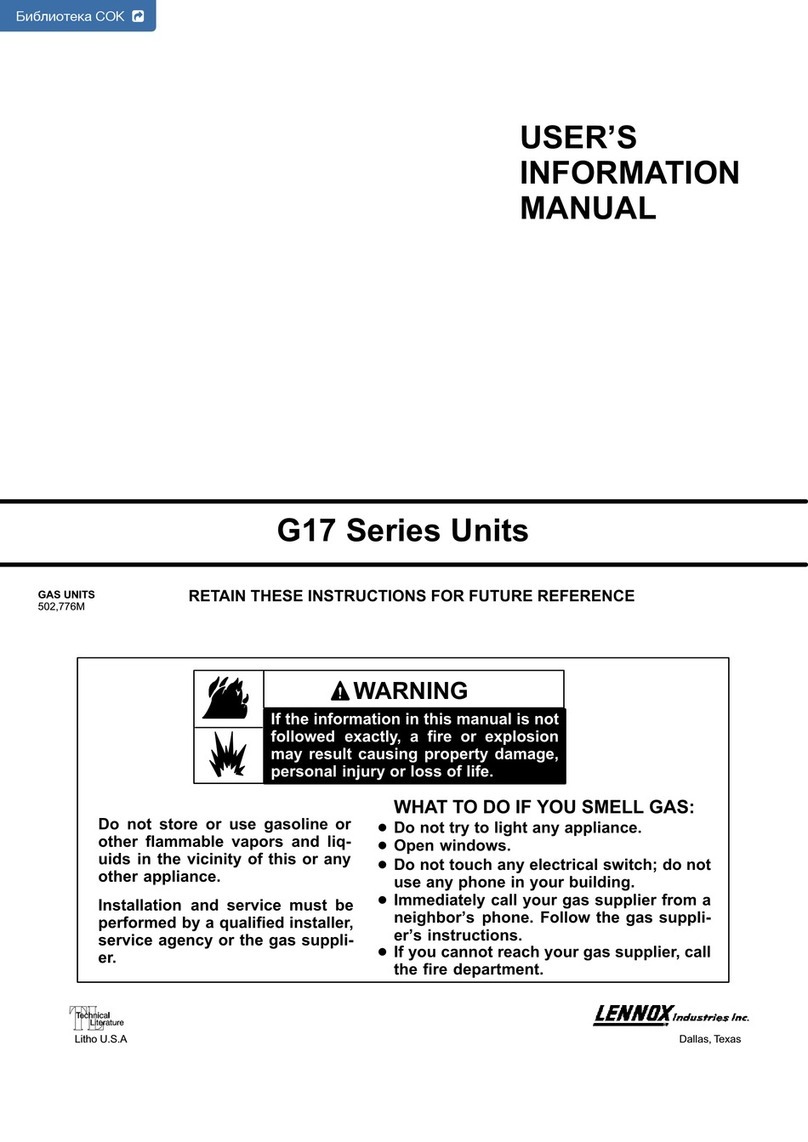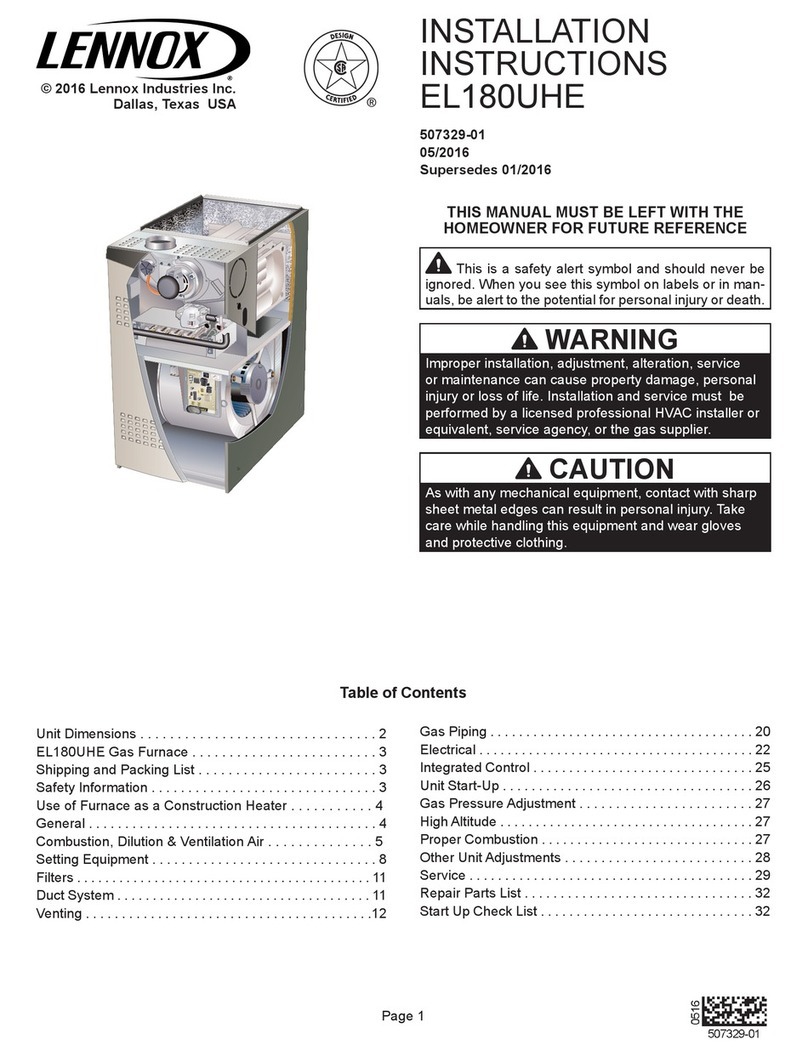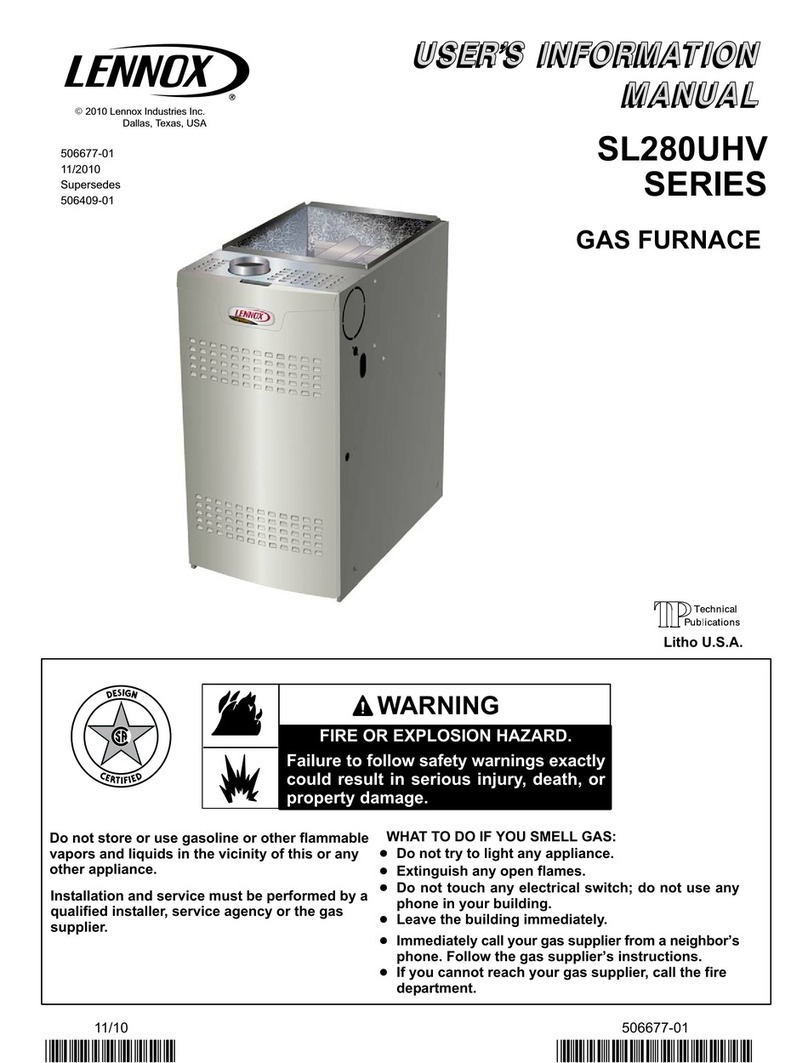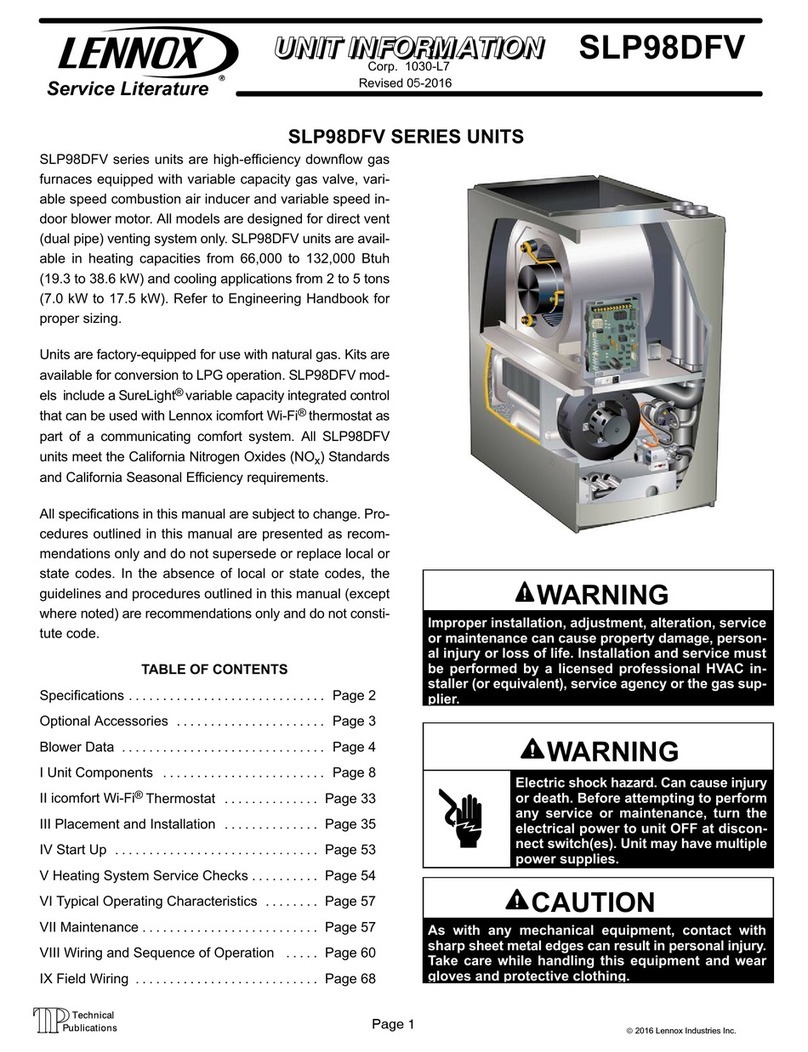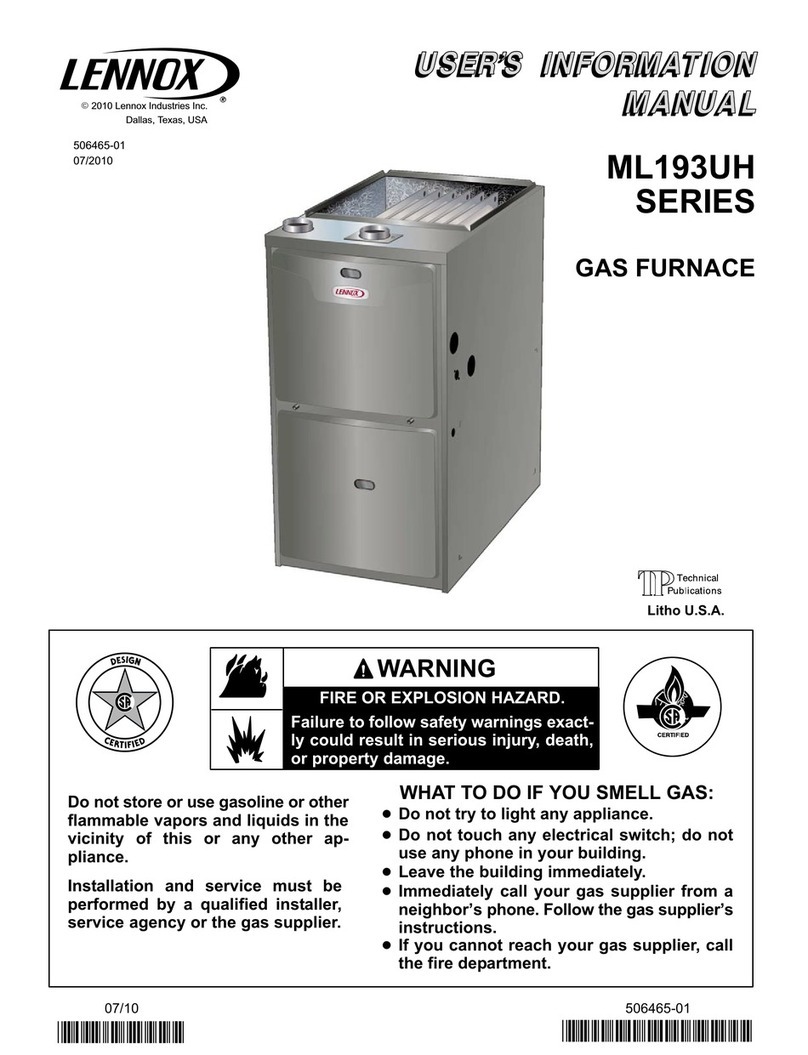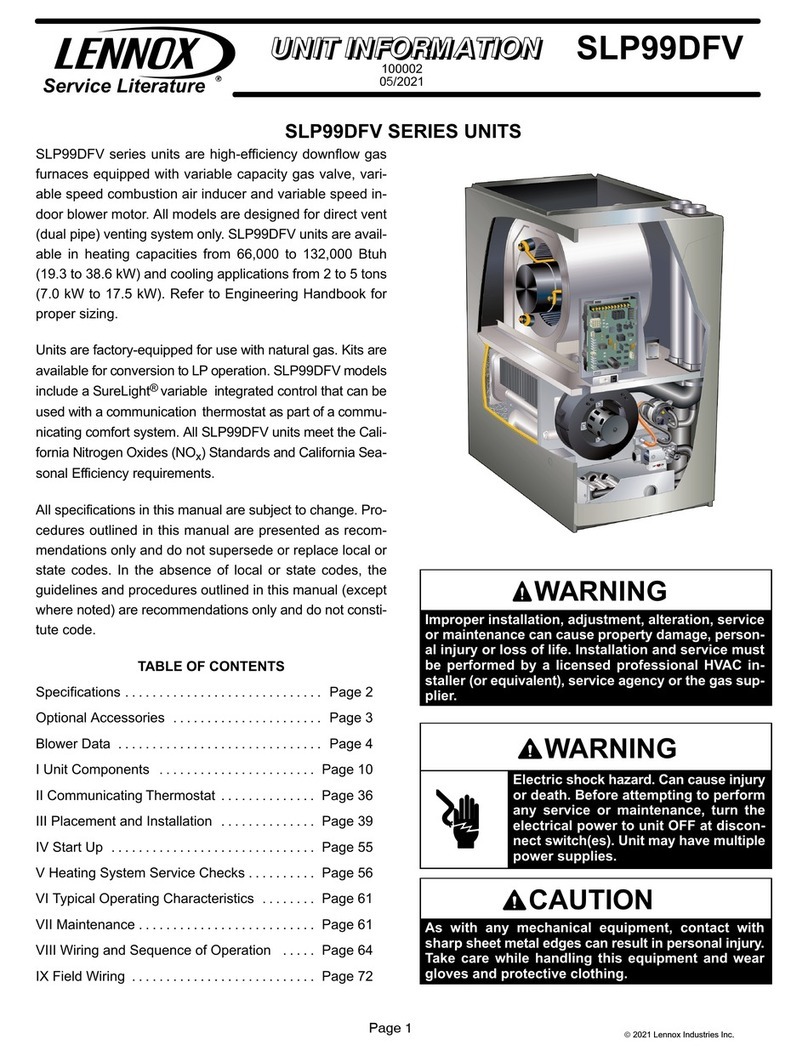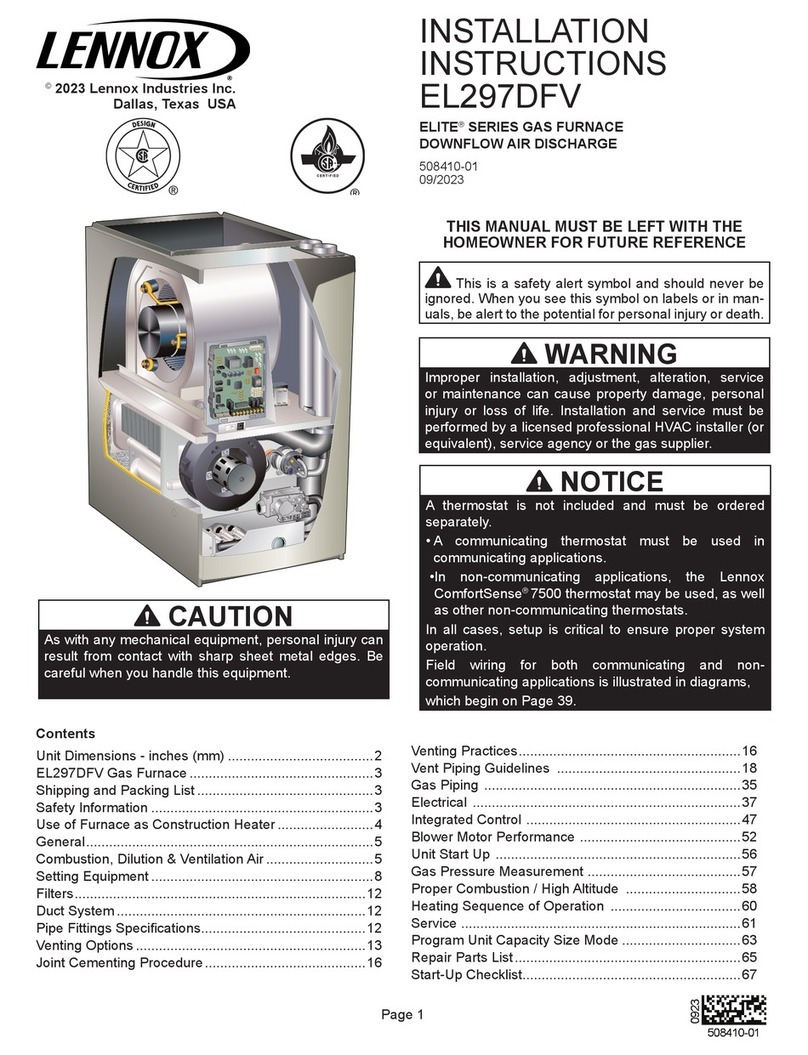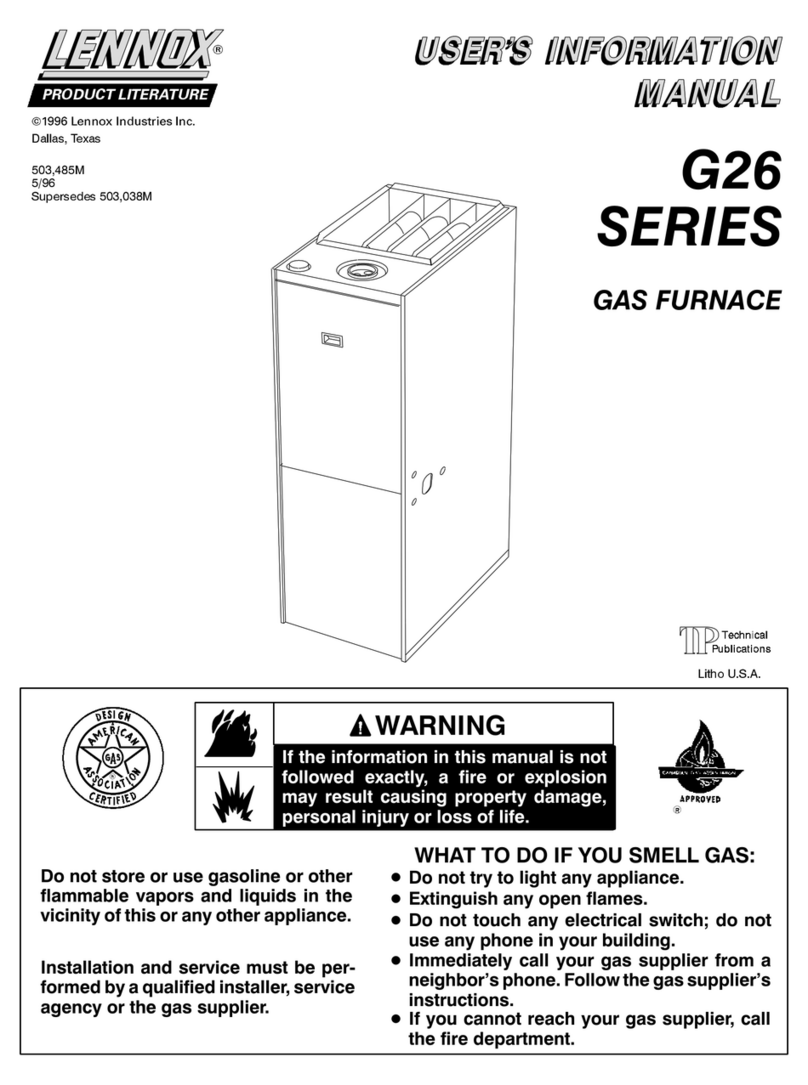
Page 5
WARNING
Product co tai s fiberglass wool.
Disturbi g the i sulatio i this product duri g
i stallatio , mai te a ce, or repair will expose you
to fiberglass wool. Breathi g this may cause lu g
ca cer. (Fiberglass wool is k ow to the State of
Califor ia to cause ca cer.)
Fiberglass wool may also cause respiratory, ski ,
a d eye irritatio .
To reduce exposure to this substa ce or for further
i formatio , co sult material safety data sheets
available from address show below, or co tact your
supervisor.
Le ox I dustries I c.
P.O. Box 799900
Dallas, TX 75379-9900 USA
Combustio , Dilutio & Ve tilatio Air
In the past, there was no proble in bringing in sufficient
outdoor air for co bustion. Infiltration provided all the air
that was needed. In today's ho es, tight construction pracĆ
tices ake it necessary to bring in air fro outside for co Ć
bustion. Take into account that exhaust fans, appliance
vents, chi neys, and fireplaces force additional air that
could be used for co bustion out of the house. Unless outĆ
side air is brought into the house for co bustion, negative
pressure (outside pressure is greater than inside pressure)
will build to the point that a downdraft can occur in the furĆ
nace vent pipe or chi ney. As a result, co bustion gases
enter the living space creating a potentially dangerous situĆ
ation.
In the absence of local codes concerning air for co busĆ
tion and ventilation, use the guidelines and procedures in
this section to install G24M furnaces to ensure efficient and
safe operation. You ust consider co bustion air needs
and require ents for exhaust vents and gas piping. A porĆ
tion of this infor ation has been reprinted with per ission
fro the National Fuel Gas Code (ANSIĆZ223.1). This reĆ
printed aterial is not the co plete and official position of
the ANSI on the referenced subject, which is represented
only by the standard in its entirety.
In Canada, refer to the standard CAN/CGA B149.1 and
B149.2 installation codes.
CAUTION
Do ot i stall fur ace i a corrosive or co tami ated
atmosphere. Meet all combustio a d ve tilatio air
requireme ts, as well as all local codes.
CAUTION
I sufficie t combustio air ca cause headaches,
ausea, dizzi ess or asphyxiatio . It will also cause
excess water i the heat excha ger resulti g i rustĆ
i g a d premature heat excha ger failure. Excessive
exposure to co tami ated combustio air will result
i safety a d performa ce related problems. Avoid
exposure to the followi g substa ces i the combusĆ
tio air supply:
Perma e t wave solutio s
Chlori ated waxes a d clea ers
Chlori e base swimmi g pool chemicals
Water softe i g chemicals
DeĆici g salts or chemicals
Carbo tetrachloride
Haloge type refrigera ts
Clea i g solve ts (such as perchloroethyle e
Pri ti g i ks, pai t removers, var ishes, etc.
Hydrochloric acid
Ceme ts a d glues
A tistatic fabric softe ers for clothes dryers
Maso ry acid washi g materials
All gasĆfired appliances require air for the co bustion proĆ
cess. If sufficient co bustion air is not available, the furĆ
nace or other appliance will operate inefficiently and unĆ
safely. Enough air ust be provided to eet the needs of all
fuelĆburning appliances and appliances such as exhaust
fans which force air out of the house. When fireplaces, exĆ
haust fans, or clothes dryers are used at the sa e ti e as
the furnace, uch ore air is required to ensure proper
co bustion and to prevent a downdraft. Insufficient air
causes inco plete co bustion which can result in carbon
onoxide.
In addition to providing co bustion air, fresh outdoor air diĆ
lutes conta inants in the indoor air. These conta inants
ay include bleaches, adhesives, detergents, solvents
and other conta inants which can corrode furnace co poĆ
nents.
The require ents for providing air for co bustion and venĆ
tilation depend largely on whether the furnace is installed in
an unconfined or a confined space.
U co fi ed Space
An unconfined space is an area such as a base ent or
large equip ent roo with a volu e greater than 50 cubic
feet (1.42 3) per 1,000 Btu (.29 kW) per hour of the co Ć
bined input rating of all appliances installed in that space.
This space also includes adjacent roo s which are not
separated by a door. Though an area ay appear to be unĆ
confined, it ight be necessary to bring in outdoor air for
co bustion if the structure does not provide enough air by
